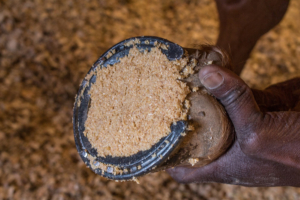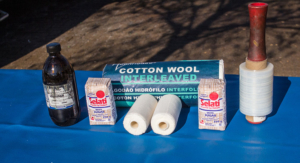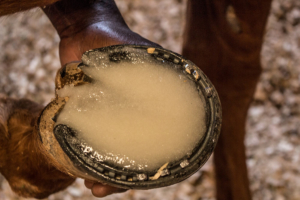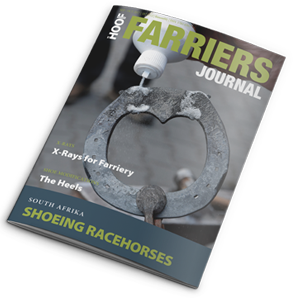
Does floating heels work on really dry feet?
Southafrican racehorse expert Andy Rivas explains how he approaches floating dry feet:
South Africa – Shoeing race horses
In most of the horses that Rivas sees, the greatest forces are exerted on the medial side of the hoof at the fast gallop. That means that pushed up medial heels can be a problem. If they are not treated correctly, medial heel pain will ensue. For mild cases Rivas tries to change how the forces are exerted on the foot. By tapering the medial heel of the shoe he moves the point of ground contact forward, closer to the medial quarter, and ensures that the medial heel does not touch the ground too early when landing. As a result, the amount of pressure exerted on the medial heel quarter is reduced both statically and dynamically.
For more severe cases he floats the pushed up heels. Here a special pre- and post-shoeing treatment is the key to success. Before floating a foot Rivas has it packed in a warm wheat bran and Epsom™ salt bandage. That makes the foot soft enough to settle when floated on the medial side. The shoe is nailed on with only two front nails on the floated side and the horse stays like that in its stall overnight. The floated side of the pre-treated, softened foot normally settles enough by the next morning to make contact with the shoe, at which point more nails can be driven in. Once that is done, the foot is hardened again by applying a sugar-eucalyptus oil bandage. This helps to keep the now settled heel in place and also counteracts any sensitivity that may have resulted from the previous horn-softening treatment. This sugar and eucalyptus oil hardening procedure is sometimes used as well for tender-footed horses or top stars to ensure that they perform at their best.
-

Ingredients for the “hoof-softening-bandage”.Epsom™Salt, wheat bran, bandage material
-

Epsom™ Salt-wheat bran mix for hoof softening before bandage is applied
-

Ingredients for the “hoof-hardening-bandage”. Eucalyptus oil, sugar, bandage material.
-

Ecalyptus oil-sugar mix for hoof hardening before bandage is applied
